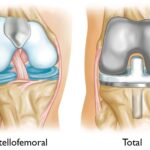Insights into Muscle Contusions
Muscle contusions, commonly known as bruises, frequently occur in athletes participating in contact sports. They rank as the second leading cause of sports injuries, just behind strains. While most contusions are minor and heal quickly, severe cases can lead to deep tissue damage and complications, potentially sidelining an athlete for months.
Causes of Contusions
A muscle contusion happens when a direct blow or repeated blows from a blunt object strike part of the body, crushing the underlying muscle fibres and connective tissue without breaking the skin. These injuries can also result from falls or collisions.
Symptoms of Muscle Contusions
Contusions typically cause swelling, pain, and restricted joint range of motion near the injury site. Torn blood vessels can lead to bluish discolouration. The injured muscle may feel weak and stiff. Sometimes, a pool of blood (hematoma) collects within damaged tissue, forming a lump over the injury. Severe tissue damage may accompany other injuries like fractures, dislocated joints, or torn muscles.
Diagnosis
It is essential to see a healthcare provider for a complete diagnosis. A physical examination will determine the injury’s exact location and extent. Diagnostic imaging tools such as X-rays, ultrasound, MRI scans, or CT scans may be used to visualise the injured area better. In some cases, nerve damage assessment may be necessary.
Treatment of Muscle Contusions
To manage pain, bleeding, and inflammation, follow the RICE protocol:
- Rest: Protect the injured area by stopping activity and using protective devices like crutches or slings.
- Ice: Apply cold packs for 20 minutes at a time, several times a day, avoiding direct contact with the skin.
- Compression: Lightly wrap the injured area with a soft bandage or ace wrap.
- Elevation: Raise the injured area above the heart level.
Most athletes recover quickly with these simple measures. Pain relief can be enhanced with nonsteroidal anti-inflammatory drugs (NSAIDs) like ibuprofen. Avoid massaging the injured area. During the initial 24 to 48 hours, continue with the RICE protocol to control symptoms. Keeping the rest of your body active is crucial to maintain overall fitness during recovery.
If a large hematoma persists for several days, surgical drainage may expedite healing.
Rehabilitation
As inflammation and swelling decrease, your healthcare provider may recommend applying gentle heat and starting rehabilitation exercises. Gradually increase your activity level to avoid excessive scar tissue formation, which can cause further issues. Initial rehabilitation focuses on gentle stretching to restore the range of motion. Once mobility improves, weight-bearing and strengthening exercises will be introduced. Return to non-contact sports is usually possible once you achieve normal, pain-free motion.
Returning to Sports
Athletes can return to contact sports when they regain full strength, motion, and endurance. Your healthcare provider may recommend customised protective devices to prevent further injury. Special padding can be made from firm or semi-firm materials to distribute impact forces.
Potential Complications
Prompt medical treatment and adherence to a rehabilitation programme can help prevent serious complications from deep muscle contusions. Two common complications include:
- Compartment Syndrome: Rapid bleeding may cause painful swelling within muscle compartments, disrupting blood flow. Urgent surgery may be required to relieve pressure.
- Myositis Ossificans: Attempting to rehabilitate a severe contusion too quickly can lead to abnormal bone formation within the muscle, causing pain and reduced flexibility. Gentle stretching and inflammation control are usually effective, with surgery rarely needed.
By understanding the causes, symptoms, and treatment options for muscle contusions, athletes can take proactive steps to manage their injuries and return to their sport safely. Always consult a healthcare provider for personalised advice and treatment plans.





